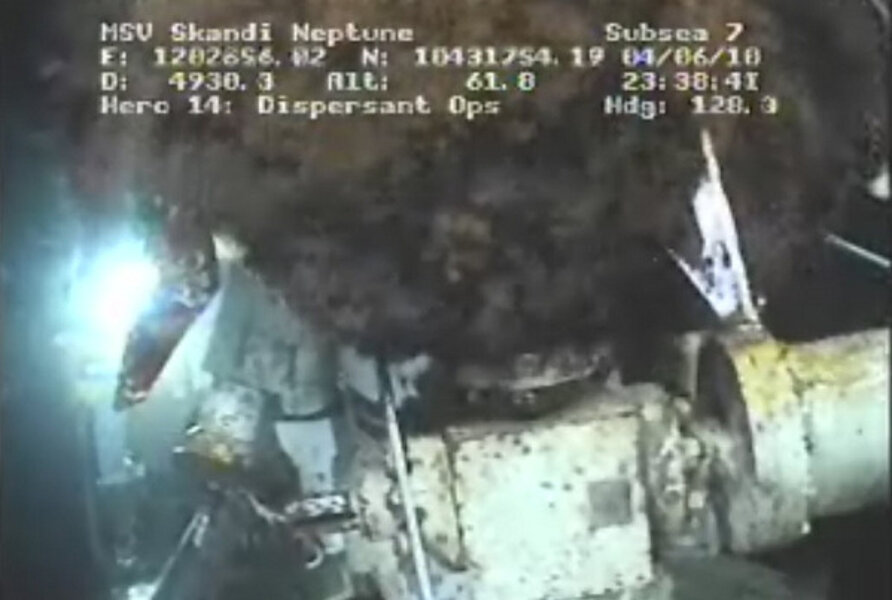Enter the no-spin zone of the deep: the BP live feed
Loading...
| Atlanta
It was the last thing BP wanted: An open, high-definition live video feed – a "spillcam," if you will – showing in excruciating detail the massive oil geyser fouling the Gulf of Mexico, a situation admittedly caused by the giant extractive firm.
But after a series of PR disasters – waffling, obfuscating, misplaced optimism, a gaffe-prone CEO – the decision by BP, under pressure from Congress, to put the live feed on the air is reaping some unexpected plaudits for the company. Indeed, BP expanded the feed from one to 12 simultaneous views last week, again under pressure from Congressman Ed Markey.
The BP live feed has become an Internet phenomenon, playing on traders' laptops on Wall Street and kept on all day in office cubicles across America.
IN PICTURES: Louisiana oil spill
The fact is, since the spillcam came online, public approval of BP's work has stopped its freefall, and even inched up a smidgen, according to a new CBS News poll.
"You can see why BP was so reluctant to put that camera down there in the first place," says Kevin Grandia, who promotes alternative energy as a blogger on EnergyBoom.com. "Yeah, it's not good public relations in their mind, they can't spin-doctor it, but I hope they appreciate the fact that … it does show a willingness and a level of transparency and authenticity that people are going to appreciate more than anything they could spin."
Extractive companies like BP, which often operate in conflict zones, are used to things going wrong and working to ameliorate damage at the corporate level, often by trying to control the message.
That's the standard operating procedure BP fell into after the Deepwater Horizon rig exploded on April 20, sinking two days later, and causing the worst spill in US history. Wary of a falling stock price – nearly 40 percent of the company's wealth has been wiped out by the spill – damage control by BP's "community relations" unit kicked into full gear .
But it quickly became apparent that standard operating procedure does not apply to the runaway Macondo well. In frustration and even anger, the government last week distanced itself from BP at its press conferences, even while working shoulder-to-shoulder in the capping effort.
BP's chief, Tony Hayward, has also stumbled, having to apologize to the 11 families of the killed for saying, "I want my life back," for having to deal with the consequences of the spill.
"Instead of reassuring the public, critics say, Mr. Hayward has turned into a day-after-day reminder of BP’s public relations missteps in responding to the crisis," write Jad Mouawad and Clifford Krauss in the New York Times.
On Friday, BP replaced Hayward as the company's front man on the spill with company troubleshooter Robert Dudley, whose ultimate task will be to clean up BP's tarnished image.
BP's public reaction to the spill so far, says crisis management consultant Larry Smith in Louisville, Ky., offers a telling glimpse into the pitfalls of modern media-spin work.
"The question is, why does it take so long for intelligent people, well-educated and very bright, and not always greedy, to … use common sense," says Mr. Smith.
Enter the no-spin zone of the deep: the BP live feed.
It's talked about on late night shows, discussed on live-blogs, and searched for on Google by the millions.
Aside from the live feed serving as a symbol of a "bleeding America," as Syracuse University pop culture expert Robert Thompson puts it, the BP live feed of the plume also shows BP's remotely-operated submarines working, not talking, offering perhaps the boldest example yet of corporate transparency in the midst of a world-shaking industrial accident.
IN PICTURES: Louisiana oil spill
Related:
What popularity of the BP live feed 'spillcam' says about us





